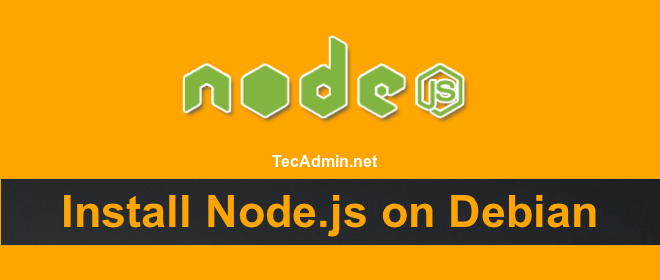Keepalived is used for IP failover between two servers. Its facilities for load balancing and high-availability to Linux-based infrastructures. It worked on VRRP (Virtual Router Redundancy Protocol) protocol. In this tutorial, we have configured IP failover between two Linux systems running as a load balancer for load balancing and high-availability infrastructures. You may also intrested in our tutorial How to Setup HAProxy on Ubuntu & Linuxmint . Network Scenario: 1. LB1 Server: 192.168.10.111 (eth0) 2. LB2 Server: 192.168.10.112 (eth0) 3. Virtual IP: 192.168.10.121 I hope you get a better understanding of the setup with the above structure. Let’s move to…
Author: Rahul
IIS is formerly known as Internet Information Server. It is created by Microsoft for Windows operating systems. IIS supports HTTP, HTTPS, FTP, FTPS, SMTP and NNTP protocols. Microsoft also provides a graphical user interface for IIS called IIS Manager. It is useful for managing websites and other applications on Internet Information Server. Useful tutorials: How to Setup Let’s Encrypt SSL in IIS How to Redirect HTTP to HTTPS in IIS How to Setup Reverse Proxy in IIS Install IIS on Windows Use the following step-by-step tutorial to install IIS on Windows 8 & Windows 10 operating systems. Step 1- First…
Discovering your Linux system’s IP address is a fundamental skill for anyone involved in network troubleshooting, server management, or cybersecurity within Linux environments. This tutorial delves into the art of utilizing the command line interface (CLI), a tool renowned for its power, flexibility, and precision in handling Linux system tasks. We’ll explore various command line methods to find your Linux machine’s IP address, with a focus on commands like ifconfig, ip, and hostname. These commands are pivotal for network administrators and IT professionals looking to streamline their network setup or resolve connectivity issues. By the end of this comprehensive guide,…
How to Install Ruby on CentOS/RHEL 7/6 . Ruby is a dynamic, object-oriented programming language focused on simplicity and productivity. RVM (Ruby Version Manager) is a tool for installing and managing multiple Ruby versions on single operating systems. This tutorial will help you to install RVM on your system. After that install the latest Ruby on CentOS and RedHat systems using RVM. Step 1 – Installing Requirements First of all, you need to install all required packages for ruby installation on our system using the following command. yum install gcc-c++ patch readline readline-devel zlib zlib-devel libffi-devel \ openssl-devel make bzip2…
The Extended (ext) filesystem was the first filesystem specifically developed in 1992 for Linux systems. The ext was the first extended filesystem used for Linux systems. After that ext2, ext3 and ext4 Linux filesystem developed time to time. All the data used in the tutorial has been taken from wikipedia.org. Ext2 – The Second Extended Filesystem Ext2 is also known as a second extended filesystem. Before ext3, it was the major file system used by a variety of Linux operating systems. It was developed to overcome the limitation of the original ext file system. Known as Second extended file system.…
Ruby is a popular programming language that is used to develop web applications, mobile applications, and desktop applications. If you are a Fedora user, you may want to install Ruby on your system to start developing Ruby-based applications. In this article, we will guide you through the process of installing Ruby on Fedora using RVM (Ruby Version Manager). RVM is a popular tool for managing Ruby environments on Linux systems. With RVM, you can easily install multiple Ruby versions on your system, switch between them, and manage gemsets. Here are the steps to install Ruby on Fedora using RVM: Step…
Node.js is a platform built on Chrome’s V8 JavaScript engine.Nodejs can used for easily building fast, scalable network applications. The latest version node.js ppa is maintaining by its official website. We can add this PPA to the Debian 12 (Bookworm), Debian 11 (Bullseye), and Debian 10 (Buster) Linux systems. Use this tutorial to install latest Nodejs & NPM on Debian 12/11/10 systems. To install specific nodejs version, Visit our tutorial Install Specific Nodejs Version with NVM. Step 1 – Add Node.js PPA You are required to add Node.js PPA to your system provided by the Nodejs official website. We also…
Key-based authentication is a more secure method for accessing your Linux server via Secure Shell (SSH) than using a password. It relies on a pair of cryptographic keys – a private key stored on the client machine and a public key stored on the server. In this article, we’ll guide you through setting up key-based SSH login in Linux, including generating keys, transferring public keys, and configuring the server. Step 1: Generate an SSH Key Pair The first step in setting up key-based SSH login is to generate an SSH key pair on the client machine. Open a terminal on…
Recursive search is a process by which you search for a specific string in a directory and all its subdirectories. This technique can be particularly useful when you need to search through large and complex file structures, where a simple search may not be sufficient. With recursive search, you can search for strings in all files within a directory, regardless of their location or type, making it an ideal solution for complex search tasks. There are several ways to perform a recursive search in the Linux command line, and one of the most popular is the use of the ‘grep’…
Welcome to the world of Go programming! If you’re a Linux Mint user looking to delve into the efficient and powerful realm of Golang, you’ve come to the right place. This comprehensive guide will walk you through every step of installing Golang on your Linux Mint system, ensuring a smooth and hassle-free setup. What is Golang? Go, often referred to as Golang, is an open-source programming language developed by Google. Known for its simplicity, efficiency, and strong support for concurrent programming, Go is a popular choice for building everything from simple command-line tools to large-scale network servers and distributed systems.…



